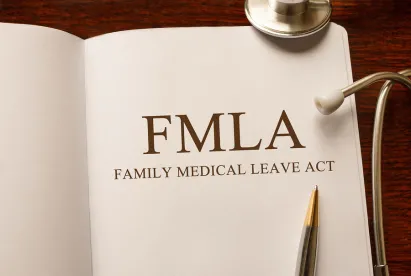As workplaces continue to reopen, the U.S. Department of Labor (DOL) and Centers for Disease Control and Prevention (CDC) issued additional guidance addressing various return to work issues and leave under the Family and Medical Leave Act (FMLA) and Families First Coronavirus Response Act (FFCRA).
The new DOL guidance, summarized below, appears on the DOL’s FFCRA Questions and Answers page. The CDC’s interim guidance addresses return to work criteria for health care professionals with SARS-CoV-2 infections, and the discontinuation of isolation of persons with COVID-19 in non-health care settings.
New Guidance and Clarification from the DOL
Some of the new DOL guidance includes the following clarifications.
-
Can an employer require an employee, who took paid sick leave under the FFCRA to care for a family member who was self-quarantining because of symptoms of COVID-19, to telework or remain on leave until the employee tests negative for COVID-19?
-
In general, and subject to certain exceptions, an employee returning from paid sick leave under the FFCRA has a right to be restored to the same or an equivalent position. However, due to the public health emergency and the employee’s potential exposure to an individual with COVID-19, the employer may temporarily reinstate him/her to an equivalent position requiring less interaction with co-workers or require he/she telework.
-
In addition, the employee must comply with job requirements unrelated to having been out on paid sick leave. For instance, a company may require any employee who knows he or she has interacted with a COVID-infected person to telework or take leave until he or she has personally tested negative for COVID-19 infection, regardless of whether he or she has taken any kind of leave. Such a policy would apply equally to an employee returning from paid sick leave. However, employers may not require the employee to telework or be tested for COVID-19 simply because the employee took leave under the FFCRA.
-
-
Can an employee who previously exhausted paid sick leave benefits under the FFCRA and was then subsequently furloughed ask for additional paid sick leave benefits under the FFCRA upon reinstatement and reopening of the business?
-
No. Employees are limited to a total of 80 hours of paid sick leave under the FFCRA. If the employee took fewer than 80 hours of paid sick leave before the furlough, he or she would be entitled to use the remaining hours after the furlough, assuming he or she had a qualifying reason to do so.
-
-
If an employee took four weeks of expanded family and medical leave before being furloughed and continues to need to care for his or her child because the child care provider is unavailable for COVID-related reasons, how much expanded family and medical leave does he or she have available?
-
Under the FFCRA, the employee is entitled to up to 12 weeks of expanded family and medical leave. If four weeks were used before the furlough, the employee will be eligible for eight additional weeks of leave if he or she has a qualifying reason to take it.
-
Because the reason the employee needs leave may have changed during the furlough, the employer should treat a post-furlough request for expanded family and medical leave as a new leave request and have the employee provide the appropriate documentation demonstrating the current need for the leave.
-
The DOL also updated its FFCRA guidance posters for federal workers and all other employers. These posters fulfill the notice requirements for employers obligated to inform employees of their FFCRA rights. In addition, the DOL prepared a Quick Benefits Tips Poster explaining to employees the different amounts of leave available under the FFCRA.
New Guidance and Clarification from the CDC
Some of the highlights from the CDC’s updated guidance on returning to work in the health care setting include the following:
-
Health care professional with mild to moderate illness who is not severely immunocompromised may return to work when: (1) at least 10 days have passed since symptoms first appeared; (2) at least 24 hours have passed since last fever without the use of fever-reducing medications; and (3) symptoms have improved.
-
Health care professionals with severe to critical illness or who were severely immunocompromised but who were asymptomatic throughout their infection may return to work when at least 20 days have passed since the date of their first positive viral diagnostic test.
-
Health care providers with severe to critical illness or who are severely immunocompromised may return to work when: (1) at least 20 days have passed since symptoms first appeared; (2) at least 24 hours have passed since last fever without the use of fever-reducing medications; and (3) symptoms have improved.
In addition, the CDC updated its guidance for discontinuation of isolation of non-health care individuals with COVID-19. The CDC clarified that non-hospitalized people with COVID-19 who have symptoms and were directed to care for themselves at home may discontinue isolation under the following conditions: (1) at least 10 days have passed since symptom onset; (2) at least 24 hours have passed since resolution of fever without the use of fever-reducing medications; and (3) other symptoms have improved.




 />i
/>i

